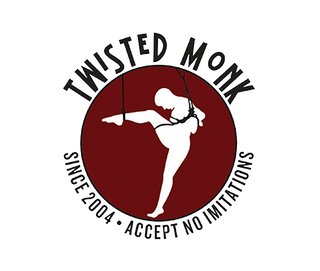
The other day, as I was stuck in Seattle’s legendary traffic, I was listening to an interesting piece on NPR about “The Tools of the Trade.” It featured stories about the items used by professionals to do their job. There was a chef who still uses the knife his grandfather used as a butcher, for example, and the hairdresser who swears by her thousand-dollar scissors.
This got me thinking, what tool do I use everyday?
I cut rope, lots of rope. Millions of feet of rope have passed through my hands over the years. You might think that with that much cutting I’d have some expensive, specialized set of tools for the job. When I gear up for work every day I reach for a pair of basic safety shears. Simple, black-handled* shears, the same kind we have sent out with our rope kits since 2005.
Why, you ask? Well, I guess I would refer back to the key principle I founded my company on. I won’t sell anything I wouldn’t use in my own bedroom.
As a company we talk a lot about our commitment to customer safety, and including a set of shears with every kit is part of that. I hope you never have to use them; cutting a partner out of rope is a terrifying thing, and I have written about my personal experiences before. I hope my customers never have to experience that terror, but if they do I want them to have the best tool on hand just in case. A tool that is useful, long lasting and not included as an afterthought to make a few extra bucks. The shears you have in your hands are the same ones I and my crew rely on every day to do our job. Every time we order new shears, we pull out a handful and use them in the shop.
Let’s shift gears for a moment.
A quality tool is no good if you don’t know how to use it.
Firstly, test your shears. Understand how much force is required to effectively cut your rope. If you don't have scrap rope to test; we try to leave an extra inch or so after the whipping on our rope. a simple way to test your shears is to trim that unwhipped end. Start at least ¼-½ inch away from the base of the whipping and cut the unfinished end off. Get a feel for how much force it takes and find out where in your hand the shears fit best.
Secondly, remember that rope is replaceable, whereas people are not.
With quality educational material, realistic expectations, and good communication, most folks will never find themselves needing to cut a partner out of bondage. Quality, artisan rope is an expensive investment, but you shouldn’t hesitate to reach for those shears in an emergency. If you have to cut your Twisted Monk rope in an emergency situation, please contact us. We will help you replace that cut rope.
We get free samples from sales reps all the time. “But these have unobtanium edges” they say. Or “Ours come in a rainbow of colors and cost a fraction of what you are paying now”.
So we take try them out, really putting them to the test. Most fail, badly. Sure, they have neon handles but if they fail after a week of heavy use? I won’t carry them. Those boring black (or blue, if you're a lefty) shears you see on this site have passed, “The Monk Test.” They are tried and true workhorses that stay sharp after cutting down tens of thousands of feet of rope.
“But Monk,” you say, “these are only intended for an emergency!”

My team depends on these shears on a daily basis. The tools we use every day, or expect to use every day, need to get the job done. Like you, I never want to reach for those shears with my partner, but when I do I need to know that they will work flawlessly. Emergencies need to be prepared for. We owe our partners and ourselves nothing less.
My crew uses the same tool, every day, to do our jobs.
*Along with the classic shears we've carried for years, we also now offer shears designed for left-handed use. Available individually or as an upgrade to our rope kits.

